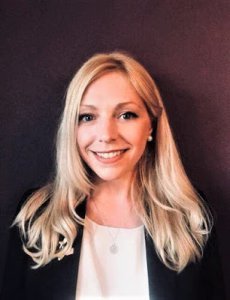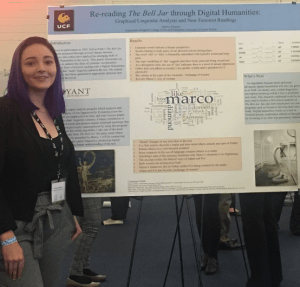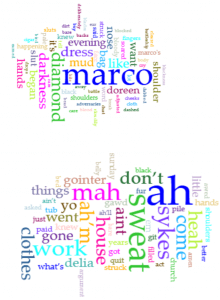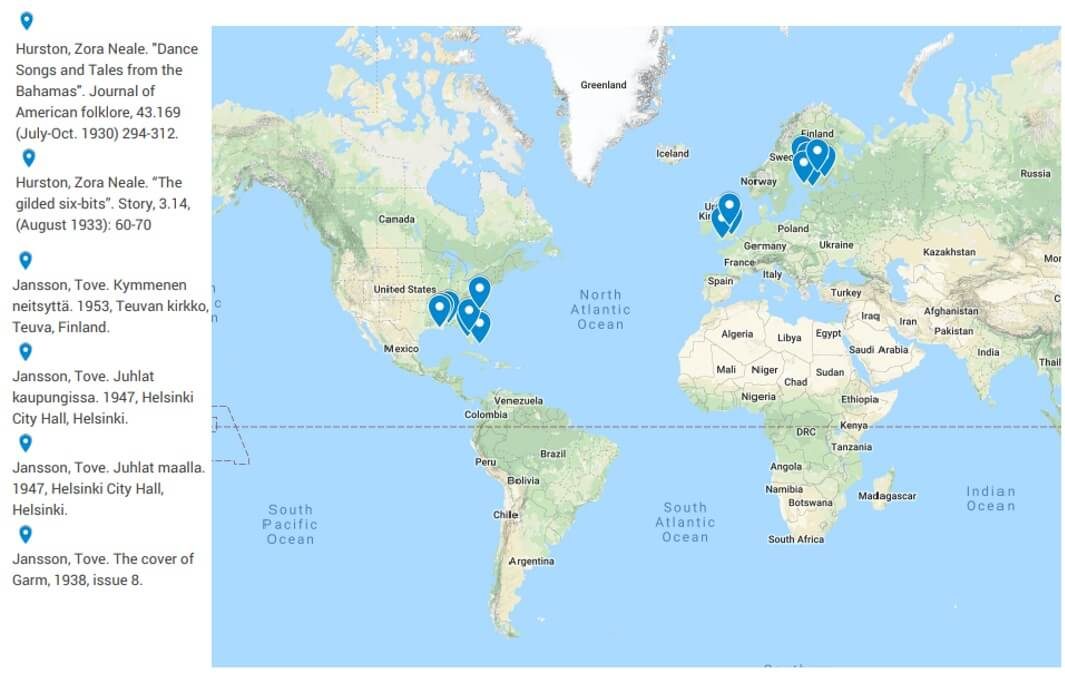English and Careers: Integrative-Learning Assignments for Literature Majors

Louise Kane, Ph.D.
Assistant Professor of Global Modernism
UCF Department of English
One of the most common misconceptions about literature majors (and scholars!) is that they only like to read and write about books. This is true, to a degree. However, they also enjoy creative problem-solving, planning advertisements and press releases, and working with people from all walks of life. Being a lit major is about far more than being a reader or studying old texts. It’s about networking, collaborating, and exploring forms of interdisciplinary learning in new ways. One of the ways English students can start to engage in activities that prepare them for real-world careers is to engage in integrative learning. This form of learning also offers students on other humanities courses—such as history, sociology, legal studies, and philosophy—opportunities to develop their analytical and writing skills, greater confidence in public speaking, and new ways of presenting complex ideas in simple, concise terms.
What is Integrative Learning?
Integrative Learning is a form of learning that connects the core knowledge and skills of a discipline or major to real-world professional and civic contexts. The American Association of American Colleges and Universities (AAC&U) defines integrative learning as “an understanding and a disposition that a student builds across the curriculum and co-curriculum, from making simple connections among ideas and experiences to synthesizing and transferring learning to new, complex situations within and beyond the campus.” UCF emphasizes three core components of integrative learning: intentional learning, high-impact practices, and metacognition. To learn more about integrative learning at UCF, click here.
How can students participate in Integrative Learning?
Integrative-Learning Assignments
The easiest way is for students to join an “IE” (Integrative-Learning Experience) designated course. This type of course has assignments that have been specially designed to provide students with connections and pathways to real-world and industry . You can learn more about the IE designation on the QEP website, here. However, anyone can include integrative-learning assignments in their classes, even if the course is not a designated IE . Indeed, many of us are already incorporating aspects of integrative learning into our courses, even if we don’t call it that.
The following are examples of different types of integrative-learning assignments that I have used in my literature courses. These assignments can also be modified to fit the needs of a wide variety of humanities courses, including those related to History, Creative Writing, and Modern Languages, and even some STEM courses.
Some Examples of Assignments
The Class Journal
Using the framework of a mock peer-reviewed journal, this assignment asks students to submit an abstract and final research article for consideration to the class online journal (instructors can set up a simple online blog/webpage, or use the “discussion” function in Canvas, to serve as the journal submissions page). Several existing literature and creative writing track courses here at UCF have already used the framework of the journal as the basis for assignments. The graduate level Literary, Cultural, and Textual (LCT) Studies Capstone course, for example, contains an assignment which asks students to write a journal abstract, and the undergraduate Editing and Publishing Certificate enables students to review submissions and conduct other editorial duties for the Florida Review and Cypress Dome journals.
However, along with integrating an abstract-writing component, this assignment also offers students a chance to engage directly in a journal’s review process through conducting the peer review stage themselves. As it can be adapted to any course, it does not just have to function as a component of a capstone or literature course.
Students begin by submitting their abstract and article to the submissions portal. After submitting their own work, they then peer review their class members’ anonymous submissions. Two students are assigned to each submission and must write a review report in which they justify why they feel the article should be accepted, accepted pending revisions, or rejected. The two must collaborate on the review report, which promotes working to deadlines as part of a team and introduces students to the tricky task of giving honest feedback while retaining a constructive, professional tone. Students then receive the review report for their abstract and article and are given two weeks to make the necessary revisions before resubmitting them as part of their final examination assignment. For this final assignment, they also submit a review response report in which they outline how they have changed their work to reflect the reviewers’ feedback or defend why they have decided not to incorporate aspects of the feedback.
This assignment allows students to understand and prepare for the difficult process of scholarly publication, which is great for graduate school-bound students. It also offers the opportunity to develop writing skills necessary for any career, however, such as expressing complex ideas to broad, non-specialist audiences, and succinctly explaining an argument. The instructor could devise a topic or set of discipline-specific topics they want the students to write on, and the students could then provide abstracts written in concise, straightforward language. The addition of a discipline-specific rubric for grading gives students more tailored guidance on abstract requirements in their discipline. Students in any discipline could have an option to extend the assignment by writing up an abstract designed for a particularly prestigious peer-reviewed journal in their field. In a graduate course, advanced students could actually send off their final research article to the journal. In a modern language course, students could translate their abstract into a different language.
Digital Storytelling
A popular option that many instructors have opted to integrate into their courses is a digital storytelling module. Digital storytelling offers students novel ways of gaining new skills that will serve them well in today’s diverse workplaces, such as video production, editing, scriptwriting, and public speaking.
The assignment I used in my LIT 3931 (Topics in World Literature) class asked students to tell a story digitally by making a video detailing their responses to the different cultural backgrounds of the texts we studied. Students worked individually and began by conducting a literature review of the main theories and ideas about certain literary movements around the world, such as the Latin American Boom movement. They then created a PowerPoint lecture in which they “taught” the text and its cultural contexts to their peers (we screen these PowerPoints in the final class). The video response sees them discuss the movement, its heritage, and its significance for two minutes, while also pointing out some textual examples inspired by the movement’s key principles or tendencies. This 2–3 minute video is then embedded into the PowerPoint to form an interactive part of their lecture and to draw together some of its key arguments.
This assignment could be adapted in many ways, for example:
- The assignment could ask students to submit a 2–3 minute video to the initiative in which they discuss how different literary or historical movements relate to their own sense of culture or heritage.
- The assignment could ask the students instead to create group PowerPoint presentations, with a longer group version of the video, or even an audio podcast, included in the PowerPoint.
- Students could show their understanding of a text and its contexts by creating a “born digital” creative piece, such as an animation, short film, or video blog, in which they define or explain the history of a specific term, such as “world literature,” “global modernism,” “Asian American writing,” or “transnational exchanges.”
This form of integrative learning positions the student as the director of their own learning experience and allows them to demonstrate understanding through a medium that departs from the traditional final essay examination format used in many humanities courses.
Make a Magazine Project
For this assignment, students in my LIT 3714 Literary Modernism class consolidated their learning about the global movements that “made” early twentieth-century literary modernism by producing their own magazines. Initial writing-based assignments, such a “magazines profile” assignment, which saw them write up encyclopedia style entries for 5-6 different modernist magazines produced in the early 1900s, gave students a good grounding in the main tendencies, aims, and appearance of little modernist magazines, and they built on their knowledge by recreating their own magazine. The stipulations for the assignment were as follows: in keeping with literary modernism’s commitment to experiment across the arts, the magazine had to be innovative in some way; it had to engage with ideas of globalization, world citizenship, or the modernist movements pertaining to at least one country not based in Europe or America; it had to contain at least one piece of text translated into a language other than English.
Students had to produce their magazines in groups of 5–6, and to prepare for the assignment they conducted research into existing alternative magazines in the UCF Sol and Sadie Malkoff Typography Archives. This helped them gain a greater “real world” understanding of the politics of serial printing and of how their magazine should look. The groups were then responsible for devising and writing their magazine’s content, together with producing a prototype version of it which was then showcased at UCF’s “Celebrate the Arts” Festival and submitted, along with a group report, as part of each student’s final examination portfolio.
Linguistics, Corpus Analysis, and Digital Humanities Approaches
Corpus Linguistics Tools
This assignment invites students to explore literary texts and historical documents by experimenting with approaches to literature borrowed from linguistics and digital humanities (DH). Students can “run” two texts from the syllabus through a Corpus Analysis tool like Voyant to conduct close readings of the linguistic properties of a text. The integrative-learning aspect of this assignment derives from the way it introduces students to alternative ways of reading literature through data-based approaches. These approaches enable students to gain skills in data visualization, data mining, and statistical linguistic analysis (Voyant offers students the ability to see a range of statistics related to incidences of certain word patterns) that may come in handy for a wide range of careers in marketing, communication, and postgraduate research. Students can also use these readings as part of wider undergraduate research activities. For example, here, a student used Voyant-produced linguistic data visualizations to compare representations of race, gender, and class in Zora Neale Hurston’s short story “Sweat” and Sylvia Plath’s The Bell Jar, which the student then presented at the Florida Undergraduate Research Conference.
This assignment works well as a bridge between literature and linguistics, but could also work well for political science or communication majors, who could analyze pieces of rhetoric, advertisements, government documents, and public speeches, rather than literary texts.


Graphs, Maps, Data Visualization
Students can also use Google Maps, or more sophisticated DH data visualization tools such as Gephi and Orange to chart narrative structure, contributors to a text, or a text’s plotline. Instructors can incorporate these components as part of a wider assignment that requires students to analyze texts and then write a report or essay on their findings. Mapping literature allows students to visualize texts “in 3D,” highlighting issues of form and structure that might otherwise remain invisible. Students could then expand upon the findings of their assignment by developing their data for an interdisciplinary research article for the Pegasus Review, UCF’s undergraduate research journal. Below are some examples of a student assignment that used mapping to chart and trace forms of global publication and transnational literary exchange in the works of Zora Neale Hurston and the lesser-known Swedish author and creator or the Moomins, Tove Jansson.

Student Responses
Students appreciate the ability to complete assignments that immerse them into different disciplines and enhance employment prospects across diverse fields. Here are some student responses to the above assignments:
“I learned how to think freely and without limits and how to channel that creativity into a literary magazine.”
“Getting to grips with the different assignments made me feel like I was really experiencing life in a workplace, and not just a classroom. I have a far more realistic set of expectations now.”
“The focus on editing and using different software tools helped me get my first job as an Editorial Assistant at a large publishing house.”
Undergraduate Research: Archival Projects and Digital Repositories
Introducing students to archival research is another way of integrating new high-impact learning experiences into the classroom. While a trip to state or national archives or libraries might prove impractical, an easier option is to ask students to capitalize on the advances Digital Humanities has afforded to archival practices by engaging with digital archives and repositories. For this assignment, students write a comparative literary analysis essay or graduate teaching presentation/ research article using archival materials found in digital archives like the Florida Heritage Online Library, Digital Library of the Caribbean, or Yale University’s Digital Collections at the Beinecke Online Archive. Another option is to utilize the extensive and fascinating archival resources here at UCF as part of the assignment, such as the “African Americana,” “Caribbean West Indies,” and “Artists’ Papers” archives containing a wealth of historical material, visual art, film, periodicals, graphic novels, and pamphlets. Assignments could be adapted to provide students with more specific experience in archival studies, principles of librarianship, and managing or creating online archives.
Resources:
To learn more about integrative learning, and to see a variety of resources on lesson-planning, assignment ideas, and other High-Impact Educational Practices, click here.
Further Reading:
Auer, Michael E., David Guralnick, and Istvan Simonics. Teaching and Learning in a Digital World: Proceedings of the 20th International Conference on Interactive Collaborative Learning (ICL2017). Springer, 2018.
Blackshields, Daniel, James Cronin and Bettie Higgs. Integrative Learning: International Research and Practice. Routledge, 2014.